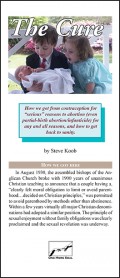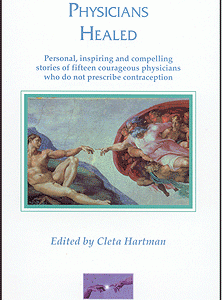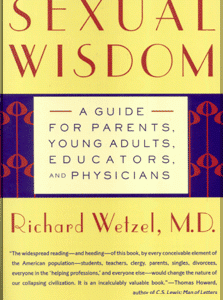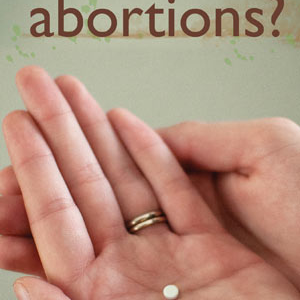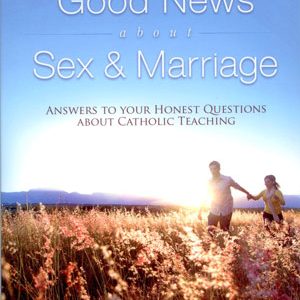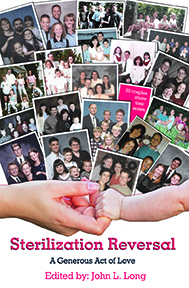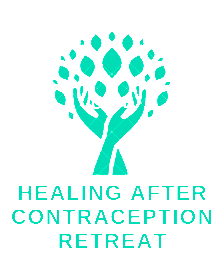How we got from contraception for “serious” reasons to abortion (even partial-birth abortion/infanticide) for any and all reasons,
and how to get back to sanity
How we got here
In August 1930, the assembled bishops of the Anglican Church broke with 1900 years of unanimous Christian teaching to announce that a couple having a, “clearly felt moral obligation to limit or avoid parenthood . . . decided on Christian principles,” were permitted to avoid parenthood by methods other than abstinence. Within a few years all major Christian denominations other than the Catholic Church had adopted a similar position. The principle of sexual enjoyment without family obligations was clearly proclaimed and the sexual revolution was underway.
Actually the drive for sexual pleasure without commitment has been with us throughout recorded history and certainly reaches farther back than that. John T Noonans book Contraception describes the crude barrier and chemical efforts that have been used to thwart conception and/or cause abortion. Contraceptive technology and especially social acceptance, however, hit historic highs in the early 1900s.
During this same era, Margaret Sanger founded the American Birth Control League and began circulating information on contraception in New York. Her organization grew to become the Planned Parenthood Federation of Americanow the largest purveyor of contraception and abortion in the world.
Condoms were made readily available to our servicemen in both WWI and WWII. Condom use was strongly encouraged to protect against STDs from foreign prostitutes. This wartime experience was the basis for condom demand by servicemen returning to their wives and sweethearts. The greater demand, plus flouting of laws against interstate transportation of contraceptives, caused these laws to be challenged, leading to the Supreme Court decision overturning them throughout the land in Griswold v Connecticut (1965). In this case the court appealed to a new Constitutional right of “privacy.”
As use of contraceptives increased through the 20th Century, growth in rates of divorce and births to unwed mothers also increased. Margaret Sangers legacy continued in the many organizations touting Planned Parenthood, radical feminism, and the overpopulation myth. Although abortion was illegal in every state, abortions were done quietly by reputable physicians, unlicensed medical personnel, and women themselves, using crude and unsterile instruments, chemical potions, or trauma to the abdomen.
Invention of the Oral Contraceptive Pill (the Pill) in the fifties and its wide distribution in the sixties changed the American culture virtually overnight. Average family size was greatly reduced, mothers took jobs outside the home, day care became a growth industry, and morality declined. The Pills promise of baby-free sex made sexual activity much more common. The Pills success in preventing births not only allowed husband and wife to be closed to new life, but also facilitated those tempted by extramarital and premarital liaisons. Engaged couples, collegians, and teenagersquite vulnerable to these temptationsfelt the Pill was fail-safe. Contraception greatly reduced their fears that immoral behavior would be exposed.
This ready availability of the Pill resulted in increased interest in all sexual activity, as one could readily see by the content of music, movies, television, and advertising. It was easy to perceive that everybody was “having sex” and having great fun at it without worrying about creating babies.
This increased sexual activity, inherent imperfections in the contraceptives, and the foggy notion that sex no longer resulted in babies, actually resulted in large numbers of very real pregnanciesbabies that were unexpected and unwanted and an embarrassment. For these parents who didnt want to be parents, abortion seemed to be the only way out.
Abortions were taking place in spite of the laws prohibiting them. Abortion was hard to prosecutewho wanted to? It was much easier to change the law than to enforce it. Individual states like Hawaii and New York legalized abortion. Pressure mounted for a national reversal of anti-abortion laws. A case was contrived and wound its way to the Supreme Court. The Roe v Wade decision legalized abortion nationwide on 22 January 1973. This decision was based on the same premise of “privacy” as was used to legalize availability of contraceptives in Griswold v Connecticut only eight years earlier.
In Planned Parenthood v Casey, 29 June, 1992, the Supreme Court made it clear that the prevalence of contraception in society makes abortion necessary. Explaining their decision to protect the right of abortion without restriction throughout pregnancy, the court stated:
. . . for two decades of economic and social developments, people have organized intimate relationships and made choices that define their views of themselves and their places in society, in reliance on the availability of abortion in the event that contraception should fail.
Consequences of this increased “freedom” in sexual matters are fairly obvious, starting with a huge increase in sexually transmitted disease and progressive breakdown of traditional marriage. Single parent families became our fastest growing poverty class, and children in these families often experienced poor health (no insurance), low academic achievement, and high crime rates. The still intact and financially capable families fled to the suburbs, leaving the poor to fend for themselves in the inner cities. Birth control led to dysfunctional families, resulting in dysfunctional communities.
Planned Parenthood (and its ilk) found the inner city attractive for abortion clinic locations that would eliminate the unfit and burdensome those who were a financial drain on government and charity. Between 1973 and 2003 there have been approximately 40 million reported surgical abortions in the United States. Unreported surgical abortions, and the uncountable losses caused by hormonal birth control and IUDs, may exceed 100 million for this period.
We cannot ignore contraception as cause/stimulus/catalyst for abortion, and we must not ignore the impact that birth control (contraception and abortion”fruits of the same tree”) has had on our society. To do so is to guarantee that the landscape will not change.
How to get back
In spite of the dismal narrative above, there are reasons to be hopeful.
1) Recognizing the cause of a problem is an essential step in solving the problem. Contraception causes abortion, directly and indirectly. If you want to impact abortion, you need to address contraception.
2) We have learned that children, young adults, and married couples need to be taught how to choose and hold on to strong loving relationships. It does not now happen automatically, nor is there the strong social support there once was. This positive education is happening in the wonderful chastity-promoting movements for young people and through the dedicated individuals and organizations promoting Natural Family Planning.
3) We also have learned that there is one “pressure point” for the culture of death that can cause it to implode. Contraception was, and still is, an experiment in pseudo-medical social engineering that has dramatically failed in every possible way: womens health, family strength, well-being of children, womens social standing, and in all other categories for which its promoters predicted benefits. Even the very questionable “benefit” of population control was only achieved by massive provision of sterilization and abortion along with contraception. [Editors Note: 2001 is the first year since 1970 that the birth rate for American women exceeded the population replacement rate of 2.2 children per woman.]
The challenge, then, is to teach people how to find the best value for their livesthe benefit of rejecting contraception and accepting children as the supreme gift of marriage that they are. We can and must create and use the resources necessary to teach single people how and why to respect their sexuality and to live without the grief and burdens of false sexual “freedom.” We must also provide married couples with the resources they need to choose openness to children over contraception. The range of possible resources is wide: TV, radio, movies, church sermons, books, pamphlets, audiotapes, videos, artwork, etc. Any of these vehicles can communicate the huge advantages of a chaste life over sexual chaos.
The results will be very impressivestrong, satisfying marriages, economic welfare for families, healthy women, healthy and happy children, and lives full of meaning. All these directly result from lifestyles in which sexual conduct supports and sustains human life instead of attacking it. This way of life recognizes the dual purpose of sex: bonding and babies, and honors a childs great need to have two parents bound together in a life-long commitment. This could be achieved in our generation! The culture of death has nothing to offer that can compare with this. All we have to do is get the message out!
One More Soul is committed to find or create the best resources for promoting this message. Let us know how we can work with you.
Contact One More Soul and mention this pamphlet for a free audiotape: “The Startling Connection between Contraception and Abortion,” by Janet E. Smith, PhD, and a One More Soul Resource Guide.
